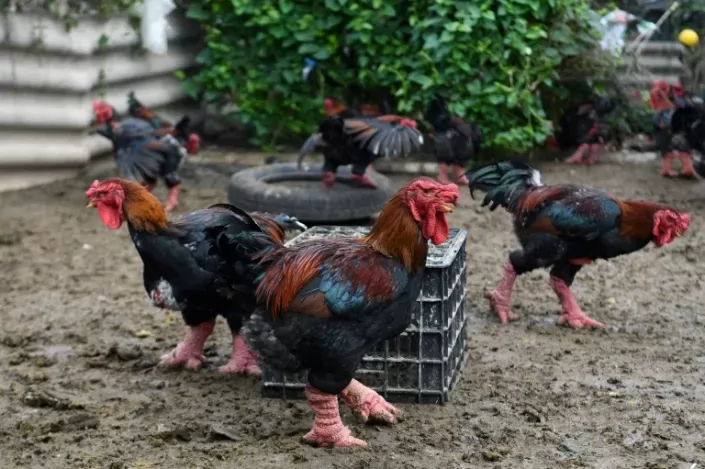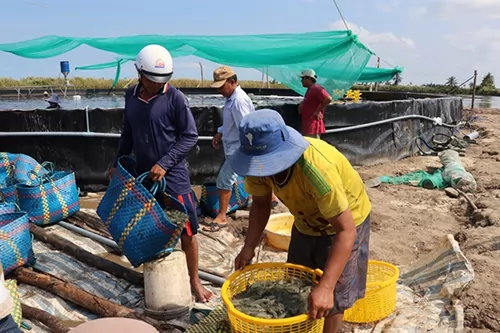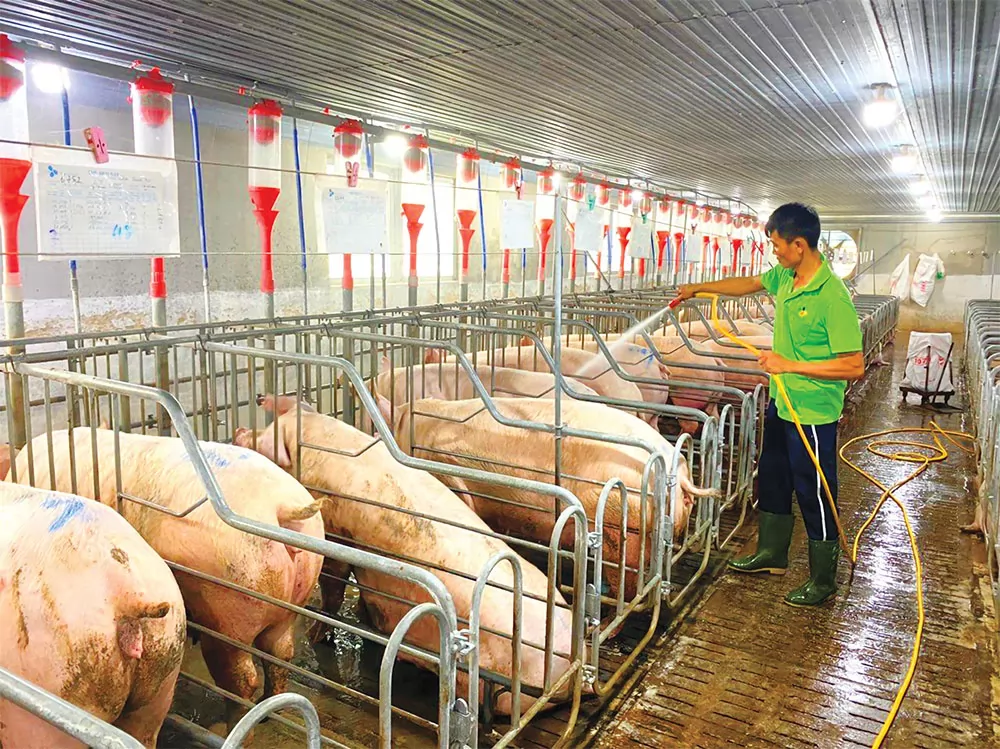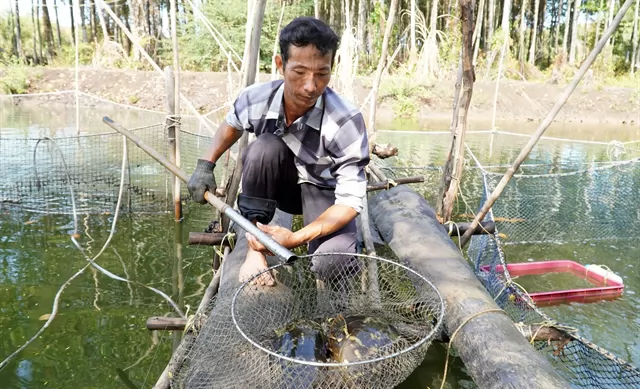Giant legs of Vietnam's "dragon chicken" a Lunar New Year delicacy

he lumpy legs of the Dong Tao chicken -- named after the commune where it is bred in northern Vietnam -- are considered a delicacy, and are particularly popular among the wealthy during the Vietnamese Lunar New Year, known as Tet. Photo: AFP
On a farm close to Hanoi, Le Van Hien picks out the best bird among his flock of "dragon chickens" -- a breed with legs as thick as a brick that can fetch up to $2,000 a head.
The lumpy legs of the Dong Tao chicken -- named after the commune where it is bred in northern Vietnam -- are considered a delicacy, and are particularly popular among the wealthy during the Vietnamese Lunar New Year, known as Tet.
Hien's prized four-kilogramme bird, whose enormous legs make up around a fifth of its body weight, was sold for about $150 -- but especially large pedigree chickens have been valued at more than 10 times that. Some are even entered into beauty contests.
The key to the bird's taste is its diet of corn and rice and the freedom it has to roam, Hien told AFP.
Although the laying hens are kept in battery cages, which have been banned in some countries across the world, the chickens bred for meat are let loose in a small garden.
"The more the chicken walks, the stronger and bigger their muscles are," said Hien, who has been breeding chickens for more than 15 years.
The meat of the Dong Tao chicken -- which can reach up to 10 kg -- is prized for its tough and chewy texture and is also low in fat.
It is sometimes served boiled, but also fried, stewed or served with lemongrass.
Le Van Luan, who picked Hien's chicken meat as a year-end gift for his business partners and elderly relatives, is a regular customer in Dong Tao.
"The best part of the Dong Tao chicken is the skin of their legs. The bigger the legs are, the tastier," he said.
Maybe you are interested

Kiên Giang to expand industrial shrimp farming
KIÊN GIANG — The Cửu Long (Mekong) Delta province of Kiên Giang plans to increase the area under industrial and semi-industrial shrimp farming models to 3,200ha and annual output to 28,000 tonnes this year, according to its Department of Agriculture and Rural Development.

Pig-breeding restructuring underway in Vietnam
Swine breeding businesses are glad of the rise in pig selling prices, after a 2023 so far with financial results in the doldrums.

Mekong Delta breeds aquatic creatures in forests to mitigate climate change effects
Breeding shrimp and other aquatic species in mangrove forests in the Cửu Long (Mekong) Delta both offers a steady income to households protecting forests and improves conservation.





